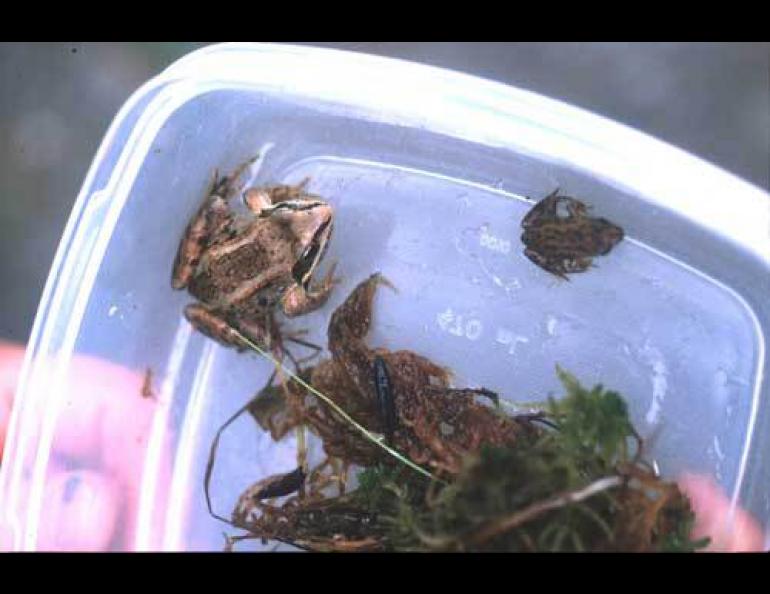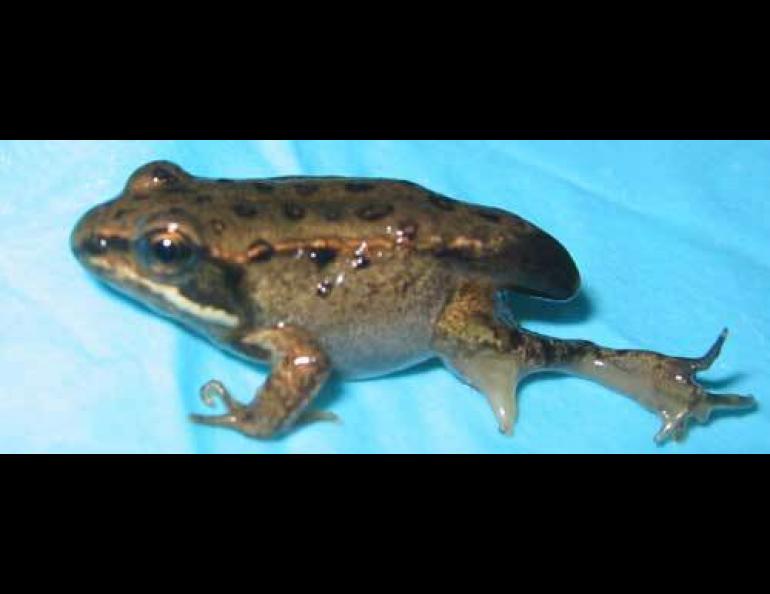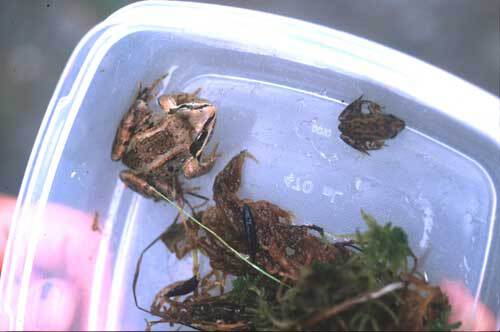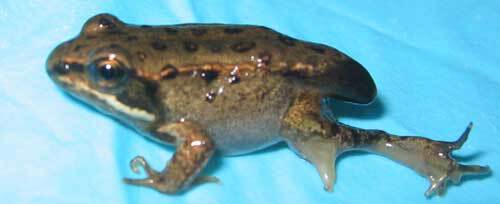

Alaska wood frogs hopping in mystery
Kathy Turk has seen several wood frogs near her home in Tok, and she wonders how the farthest-north amphibians can live in such a cold, dry place.
“Since we are pond-starved in my Tok area, how are these frogs laying eggs and where do the tadpoles grow?” Turk wrote in an email.
Before answering that question, let’s pause a moment to marvel at wood frogs, which range as far north as the Arctic Ocean in Canada and have been spotted around Anaktuvuk Pass in Alaska. These palm-size creatures survive Alaska’s winter by burrowing into the duff and allowing the cold to freeze them solid, even their eyeballs and hearts. After spending the majority of the year as tiny ice cubes, protected from drying out by the glucose their livers flood their systems with as they hibernate, they thaw and hop to breeding ponds in early to mid summer. In most of mainland Alaska, they are the only cold-blooded, smooth skin creatures roaming the boreal forest. The same species of wood frog ranges all the way south to Arkansas.
“They’re kind of the coyote of the frog world,” said Mari Reeves, a biologist with the U.S. Fish and Wildlife Service who studies wood frogs. Reeves and her field crews have traveled from the Porcupine River to the Kenai Peninsula to see if Alaska’s frogs look like they should. She also has an answer for Turk’s question:
“They could be breeding in wetlands in Tok that people don’t think of as wetlands,” Reeves said. “We find them breeding in tire tracks, roadside ditches. A place just has to stay wet through late June or mid-July. Alaskan frogs might also range farther from their breeding sites than we think they do.”
The Kenai Peninsula is the site of much of Reeves’ frog research. Along with colleague Kim Trust, Reeves has captured thousands of frogs and tadpoles there to search for abnormalities. With skins that allow water and air to pass through and tadpole stages that develop in the water, frogs are vulnerable to toxins and often are one of the first species that alert scientists that something is wrong. Of several thousand frogs Reeves and others have examined on the Kenai, about 10 percent don’t look normal. Some have missing or shorter legs, or eyes that are all black instead of the normal black with a yellow iris. Ten percent is a high number of abnormalities, Reeves said, but it’s tough to be a tadpole.
“Out of our 10 percent that are abnormal, 20-to-30 percent of them could be due to some sort of injury,” she said. “Lots of things eat tadpoles—dragonfly larvae, water beetle larvae, birds. Only about four percent of eggs make it from the tadpole stage to metamorph (into frogs).”
Injuries aside, the defect percentage in Alaska frogs seems high compared to frogs in Canada, Vermont, and Minnesota. Reeves and her partners take a good look at the abnormal frogs they capture, sending some of them live to the University of Wisconsin-Lacrosse to check them for tiny parasites. Then, their blood goes to Lafayette, Louisiana for DNA analysis at the USGS National Wetlands Research Center, and the gonads go to McNeese State University in Louisiana, where researchers will see if anything is wrong with the reproductive organs.
The researchers don’t yet know what is causing the frogs not to be perfect frogs. It could be chemical contaminants, parasites, ultraviolet radiation, predators, temperature, or a combination of these things. Pending lab results may hold the answers.
A more basic mystery about wood frogs is why people often find them hopping so far from water. Reeves said scientists aren’t sure how far wood frogs roam, but Alaska Pacific University graduate student Meg Purdue and USGS geneticist Sandra Talbot will look for clues by studying a population of Kenai Peninsula frogs this summer.
“We’ve been looking to answer that question for a long time,” Reeves said.






